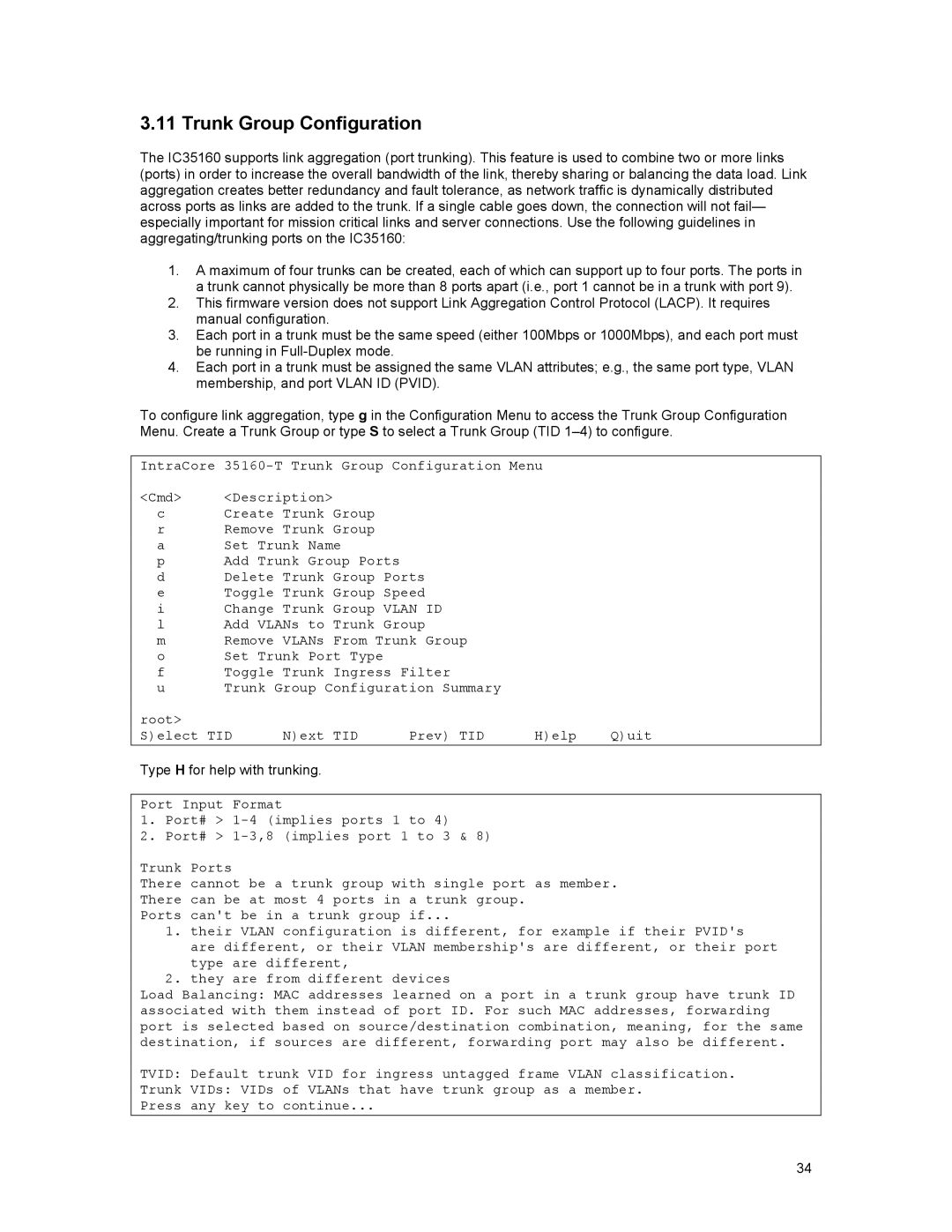
3.11 Trunk Group Configuration
The IC35160 supports link aggregation (port trunking). This feature is used to combine two or more links (ports) in order to increase the overall bandwidth of the link, thereby sharing or balancing the data load. Link aggregation creates better redundancy and fault tolerance, as network traffic is dynamically distributed across ports as links are added to the trunk. If a single cable goes down, the connection will not fail— especially important for mission critical links and server connections. Use the following guidelines in aggregating/trunking ports on the IC35160:
1.A maximum of four trunks can be created, each of which can support up to four ports. The ports in a trunk cannot physically be more than 8 ports apart (i.e., port 1 cannot be in a trunk with port 9).
2.This firmware version does not support Link Aggregation Control Protocol (LACP). It requires manual configuration.
3.Each port in a trunk must be the same speed (either 100Mbps or 1000Mbps), and each port must be running in
4.Each port in a trunk must be assigned the same VLAN attributes; e.g., the same port type, VLAN membership, and port VLAN ID (PVID).
To configure link aggregation, type g in the Configuration Menu to access the Trunk Group Configuration Menu. Create a Trunk Group or type S to select a Trunk Group (TID
IntraCore
<Cmd> <Description>
cCreate Trunk Group
rRemove Trunk Group
aSet Trunk Name
pAdd Trunk Group Ports
dDelete Trunk Group Ports
eToggle Trunk Group Speed
iChange Trunk Group VLAN ID
lAdd VLANs to Trunk Group
mRemove VLANs From Trunk Group
oSet Trunk Port Type
fToggle Trunk Ingress Filter
u Trunk Group Configuration Summary
root> | N)ext TID | Prev) TID | H)elp | Q)uit |
S)elect TID |
Type H for help with trunking.
Port Input Format
1.Port# >
2.Port# >
Trunk Ports
There cannot be a trunk group with single port as member.
There can be at most 4 ports in a trunk group.
Ports can't be in a trunk group if...
1.their VLAN configuration is different, for example if their PVID's are different, or their VLAN membership's are different, or their port type are different,
2.they are from different devices
Load Balancing: MAC addresses learned on a port in a trunk group have trunk ID associated with them instead of port ID. For such MAC addresses, forwarding port is selected based on source/destination combination, meaning, for the same destination, if sources are different, forwarding port may also be different.
TVID: Default trunk VID for ingress untagged frame VLAN classification.
Trunk VIDs: VIDs of VLANs that have trunk group as a member. Press any key to continue...
34
